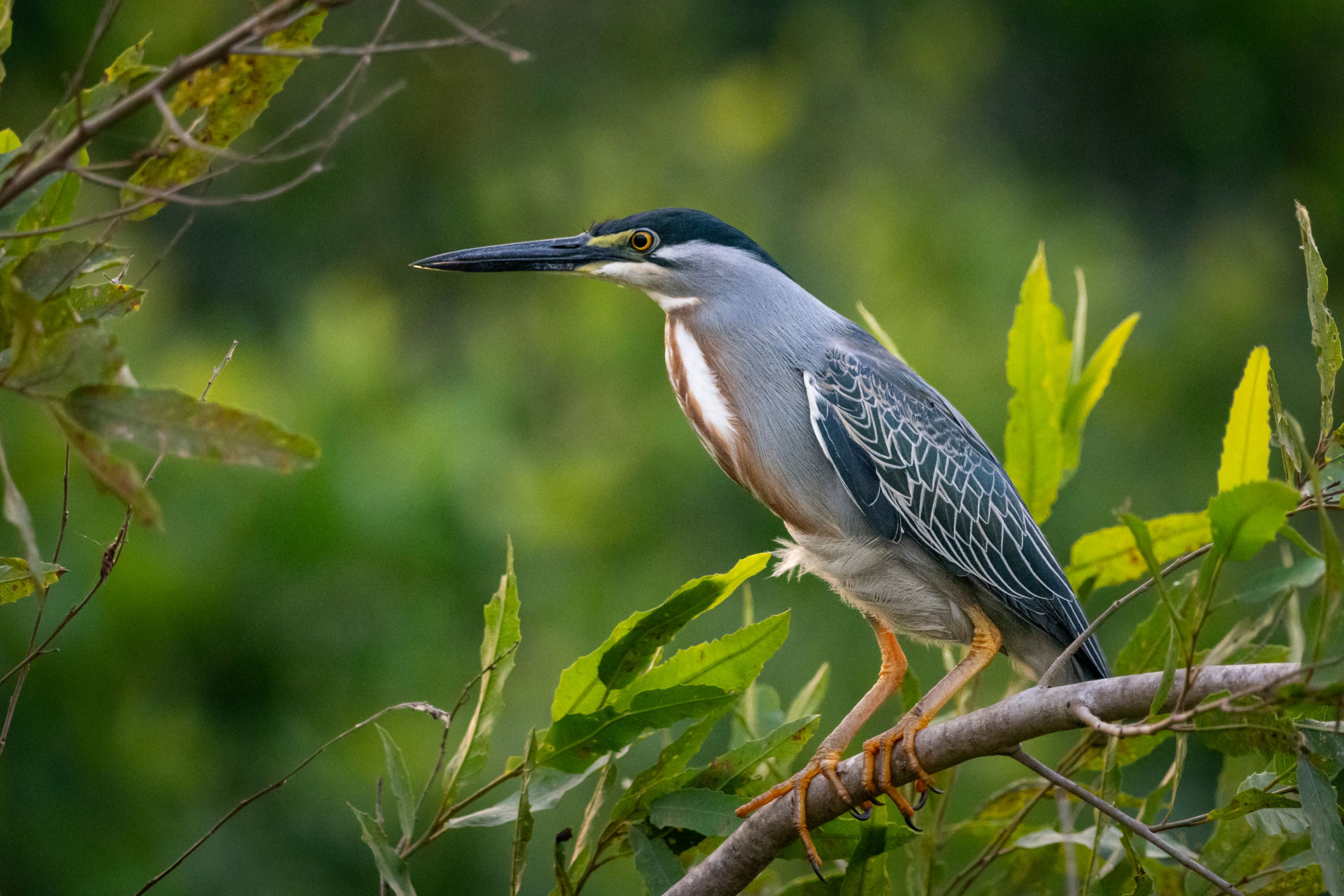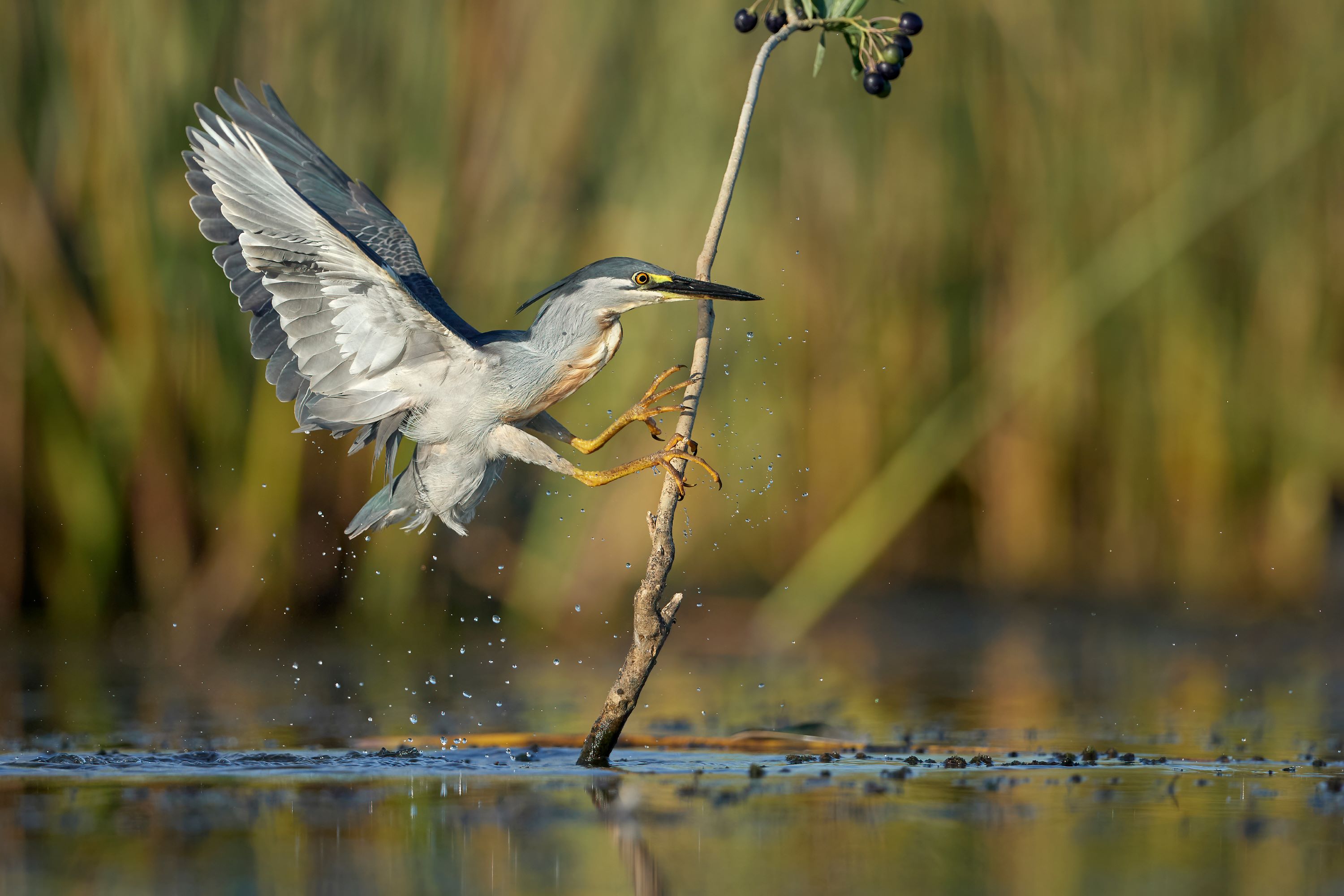
Striated Heron: The Skilled Hunter of Tropics and Subtropics
Introduction to the Striated Heron
The Striated Heron, Butorides striata, is a small and stealthy bird known for its striking striated plumage and remarkable fishing techniques. Found predominantly in tropical and subtropical regions, it is a common sight along the edges of water bodies.
Physical Description
The Striated Heron is a small-sized heron, typically measuring about 44 cm in length. It features a dark grey back, with a distinctive black cap, and striated chestnut and white underparts. The legs are relatively short and greenish-yellow, while the bill is dark and pointed, ideal for catching prey.
Habitat and Distribution
This heron has a wide distribution, encompassing parts of Africa, Asia, Australia, and the Americas. It prefers freshwater habitats, such as rivers, lakes, and marshes, but is also found in mangroves and on coastlines. The Striated Heron thrives in areas with abundant vegetation, providing cover and perches for hunting.

Behavior and Lifestyle
Striated Herons are solitary and skulking birds, often seen alone or in pairs. They are known for their patient hunting strategy, standing motionless or walking slowly to capture fish and other aquatic prey.
Feeding Habits
Their diet primarily consists of fish, but they also feed on amphibians, crustaceans, and insects. The Striated Heron is known to use tools, such as using bait to attract fish, showcasing a high level of intelligence and adaptability in feeding behaviors.
Breeding and Nesting Habits
Breeding behavior varies by region but typically occurs during the wet season. Striated Herons build their nests in trees or shrubs near water, using sticks and twigs. They may nest solitarily or in small colonies.
Egg Laying and Incubation
The female lays 2 to 5 pale green eggs. Both parents share in the incubation duties, which lasts about 20 to 24 days. The elevated nests help protect the eggs from potential predators.
Chick Rearing and Parental Care
Chicks are born altricial and require considerable care from the parents. They are fed regurgitated food and develop rapidly, fledging the nest within a few weeks of hatching.
Vocalizations and Communication
The Striated Heron is typically quiet but can produce a range of vocalizations, particularly when alarmed or during the breeding season. These sounds include a harsh 'kraak' sound and softer cooing noises.
Conservation Status
The Striated Heron is classified as Least Concern by the IUCN. While it is widespread, habitat destruction and environmental pollution pose threats in some areas.
Similar Species and Taxonomy
Part of the order Pelecaniformes and the family Ardeidae, the Striated Heron closely resembles the Green Heron in appearance and behavior. It can be distinguished by its striated chest and different regional distribution.
The Striated Heron in Utah
The Striated Heron is not typically found in Utah or North America, as it inhabits tropical and subtropical regions. In Utah, birdwatchers can observe similar species like the Green Heron in wetland areas.
Conclusion
The Striated Heron, Butorides striata, is a fascinating example of avian adaptation and intelligence. Its presence in diverse aquatic habitats across a wide geographical range highlights the importance of preserving these ecosystems. The unique behaviors and hunting skills of the Striated Heron offer a captivating glimpse into the complex and diverse world of birds, underscoring the need for continued conservation efforts for these vital habitats.